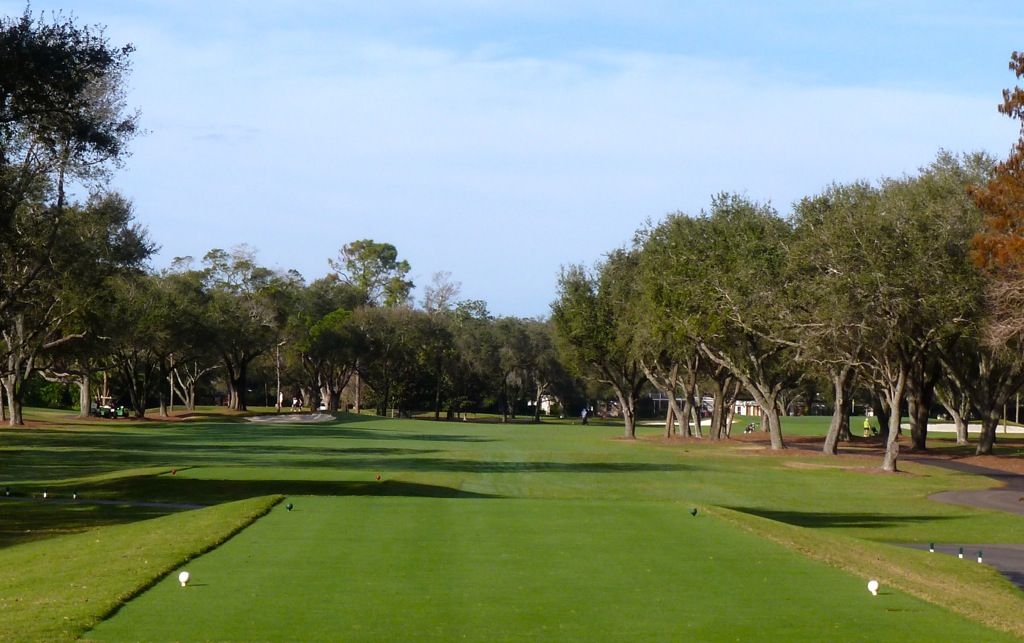Palma Ceia G&CC is a Ross design completed in 1925. The tightly routed golf course is played over rather flat terrain making for a very comfortable walk. Trees do encroach on corridors though the course never feels cramped and there is little risk of playing to adjacent fairways. Perhaps the most amazing part is the golf course is routed over only 82 acres. 82!
In 2011, Bobby Weed was brought in to complete a renovation (I don't believe it was restorative), focused mainly on drainage and re-grassing greens with TifEagle Bermuda. The renovation won renovation of the year in 2012 (read more here:
http://asgca.org/news/627-palma-ceia-golf-and-country-club-from-asgcas-weed-awarded-renovation-of-the-year-from-golf-inc).
In truth, the golf course did not photograph as well as I felt it played. In photos the subtlety of the greens, the flawless green to tee transitions, and the classic-looking and cleverly placed bunkers are lost and instead the holes appear repetitive, tree-lined and overly narrow.


A perfect site for the first tee, 20 yards from the golf shop:

An easy bogie / difficult par hole to start the round. A mid-length par-4 with two effectively placed bunkers to add strategy to this straightaway hole that runs along a boundary on the left. As is the norm at Palma Ceia, the front of the green is open, but a raised green and perimeter contouring will deflect off-line shots.

After the 1st, the golfer turns 180 degrees to play the 330 yard par-4 second. Once again, a single fairway bunker turns a straightaway hole into one with strategy as approaching from there allows the golfer to play into the slope of this tilted green.

The third hole is a mid-length par-5 with trees clearly intruding on lines of play. A dull lay-up is made up for by an interesting green -- narrow and falling off on both sides -- but the hole did not photograph well.
The 4th is fun little par-3 tucked into the corner of the property. The narrow green at the 3rd is turned 45 degrees at the 4th making for a very ellusive target.


The 5th brings us to our first dog-leg hole, another short-ish par-4. Like the 3rd, the majority of the interest is at the green, which has its high point in its centre and falls off both front and back.

The golf course is not long, playing a little over 6,200 yards to a par of 70, but there are still many holes with some serious teeth. The first of those is at the 6th, which plays over 400 yards into the wind, and which requires a carry of some 230 yards if one wants to have a clear look at the flag. Approaching this green, with its built-up bunker lips and gathering slopes is a tall task with a long club.

The 7th is an over-treed par-4 that moves right. A (presumably) added tee allows the hole to play well over 400 yards and the very large green is welcome after the precision demanded on each of the first six approaches.

The 8th and 9th play in the same direction and into the wind. The 8th is a well-bunkered if simple par-3, with a nifty tie-in to the 9th tee.


The 9th is the most difficult hole on the front-nine, a par-4 playing 440 yards. Playing near the lone fairway bunker means the golfer need not play over a bunker 20 yards short-left of the green, though the fairway bunker was out-of-reach for this golfer on the day he played.

The right-ward tilt of the land short of the green means that running approaches risk funneling to a low-spot short-right of the green, or worse, into the greenside bunker.
